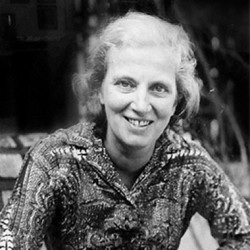By Helen Figueira
March 25, 2012
Time to read: 3 minutes
 Heirlooms promote women scientist leaders
Heirlooms promote women scientist leaders
A hundred years ago, women in this country had no right to vote. Only a privileged few had educational opportunities. While the University of Oxford admitted women as undergraduates from 1920, they imposed a quota to ensure that the ratio never exceeded one in every four men, until a mere 50 years ago. Shortly after, one of their alumni became the first British woman to win a Nobel prize for science. It was still compulsory then for women in certain professions, such as teaching and the civil service, to resign on marriage to care for their husband and children.
Hodgkin’s parents supported her inquisitive mind with books, reagents and space for experimentation. No doubt, few mothers even today would allow their daughter to set up a lab in the loft and experiment with noxious chemicals. Her father encouraged her to go to Oxford, where she encountered the university’s first X-ray crystallography lab. A family friend introduced her to JD Bernal, under whom she undertook a PhD at Cambridge. Together they showed that X-ray analysis could help unravel the structure of biological molecules – a completely new research area. When she returned to Oxford to set up her own lab, she was the only person there doing X-ray work on organic compounds.
Dorothy Hodgkin was exceptional. She was incredibly gifted and dexterous in the lab; she was a great team-builder and her focus never waned. She had both the guidance of forward-thinking parents and a liberal husband, who didn’t expect her to give up work to care for their three children. And she was in the right place at the right time. By 1955 she had cracked the structure of vitamin B12, and 14 years on she had solved the structure of insulin.
Hodgkin’s parents played a key role in affirminig her choices, and we undoubtedly instrumental in her success. Today the social and political terrain has transformed, yet few women make it to the very top. Can focusing on the exceptional few benefit the great majority? Why are women still not making it to the very top? Are they not single-minded enough? If we want to boost the number of Nobel prize winning women scientists, do we have to ask them to dedicate themselves to their projects like nuns?
Perhaps winning a Nobel prize isn’t the be-all and end-all. “Lots of good science goes on that will never win Nobels,” says Hodgkin’s biographer Georgina Ferry. And the Medical Research Council, which itself boasts 29 Nobel-prize winners (all men) is recognising excellent women scientists with its heirloom scheme. Tonight ten leading scientists and communicators will pass on jewellery heirlooms to younger scientists and communicators, who they want to reward and encourage. “It’s a great way to acknowledge the important role women play, and the satisfying lives they lead, as scientists with or without such ‘breakthroughs’ to their names.”
Women in Science – Nurturing Nobels
Thursday 8th March 2012
Science Museum’s Dana Centre
19.00-20.30
Free, but prior registration required
BM